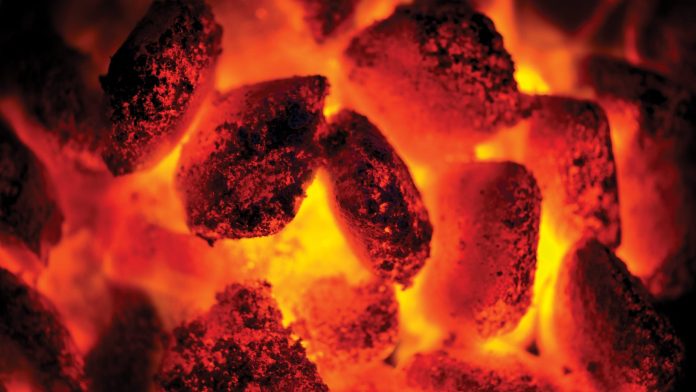Innovation News Network covers how clean coal technology could save the lives of over 22,000 European citizens and explains how clean coal actually works.
How does clean coal technology work?
Coal remains one the worst culprits for greenhouse gas emissions and air pollution. Clean coal is a phrase which we are seeing more and more of throughout Europe, however coal is still not clean enough if we want to reach climate targets with more technologically advanced power plants and technologies on the horizon, this is set to change. Clean coal technology, combined with carbon capture and storage (CCS), is set to greatly reduce Europe’s carbon footprint.
While making the future more sustainable, ‘clean coal’ is set to dramatically increase efficiency at the same time. Integrated Gasification Combined Cycle (IGCC) is the new up and coming clean coal technology and we are seeing more of these plants being erected. IGCC technology converts coal into pressurised gas, otherwise known as syngas, which can be burned to produce electricity. It is important to understand that IGCC cleans coal via gasification and then uses CCS to ensure all of the emissions are not released into the atmosphere.
The Intergovernmental Panel on Climate Change (IPCC) expressed that the best way to tackle the climate issues we are faced with is by controlling how much carbon we are releasing into the atmosphere. The IPCC believe that clean coal technology plants which are not already equipped with IGCC technology should be using CCS regardless, in a bid to reduce the impact of coal and green the conventional and traditional dirty plants.
Breaking down the process: the two methods of IGCC
IGCC consists of two different technologies; coal gasification and combined-cycle. The energy efficiency of an IGCC plant is much higher than that of a conventional power plant and it is estimated that a typical plant will emit more sulphur dioxide and nitrogen oxide in a week than a gasification plant produces annually. According to the U.S. Department of Energy, as IGCC power plants create two forms of energy, they have the potential to reach a fuel efficiency of 50%.
The coal gasification stage
Coal gasification as a clean coal technology has been around for a while now; it is a thermo-chemical process whereby steam and oxygen are used to convert the coal into a synthesis gas, known as syngas. The syngas product is primarily composed of hydrogen and carbon monoxide, often resulting in having already removed most other dirty impurities.
Combined cycle process
The cleaned gas from the gasification process is supplied to a gas turbine combined cycle, which burns the clean gas as a fuel in order to turn the gas turbine for power generation. Often, the heat from the exhaust gas is then recovered by heat exchange with water, allowing the generated steam to drive a steam turbine for additional power generation.
IGCC with CCS
In order to implement clean coal technology it is imperative that the carbon dioxide is not released back out into the atmosphere, hence why IGCC plants focus on CCS. Without capturing and storing the carbon, the plants would be counter-productive and would provide little benefit to our growing climate issues.
Once the syngas has been created, carbon dioxide can then be captured from this gas, through a water/gas shift process. Not only does this capture the carbon for storage, it also then allows the hydrogen by-product to be separated, to then be used as a fuel and for many other uses.
It is estimated that around 90% of the CO2 created in the clean coal technology process can be captured and stored, this also results in a 50% net reduction in CO2 compared to original coal.
Other methods of clean coal technology
Coal washing
Coal washing is a method of clean coal technology that purifies the coal before it is burnt. Coal washing occurs in a coal preparation plant and prepares the coal to be burnt by ridding it of its impurities, meaning that once it is burnt it produces a cleaner gas, eliminating the need for carbon capture and storage.
In coal preparation, not only is the coal “cleaned”, it is also homogenised and blended, meaning the coal is grinded down into smaller pieces ready for burning. According to NPTL, the typical steps of coal preparation and washing include:
- Crushing
- Screening into different size fractions
- Physical, chemical or mechanical processes to remove undesired impurities
- Dewatering
- Thermal drying
- Blending
- Agglomeration or briquetting
Removing sulphur from coal
Sulphur dioxide is a major cause of acid rain and therefore it is imperative that it is removed from the coal during the processes used in clean coal technology: coal can contain up to 10% of its weight in sulphur. The method of desulphurisation of coal usually requires mixing the coal with limestone; crushed coal is mixed with limestone and air is then injected during the combustion process. The sulphur reacts with the limestone to form a calcium sulphate. Using this combustion method can optimise sulphur removal by up to 90%.
The impact of coal on citizen health
In 2016 Sandbag published a report in collaboration with the Health Environment Alliance, Climate Action Network Europe and the WWF European Policy Office. The report outlines how coal is affecting the lives of European citizens. It was revealed in the study that in 2013, coal emissions were responsible for over 22,900 premature deaths, and cost Europe €62.3 billion in health costs.
The report also revealed that if the UK manages to achieve its coal phase-out plan by 2025, in part by implementing clean coal technology, it could save up to 2,900 lives both at home and abroad each year. The report goes on to explain that a pan-European closure of coal-fired power plants could prolong 22,900 lives each year.







